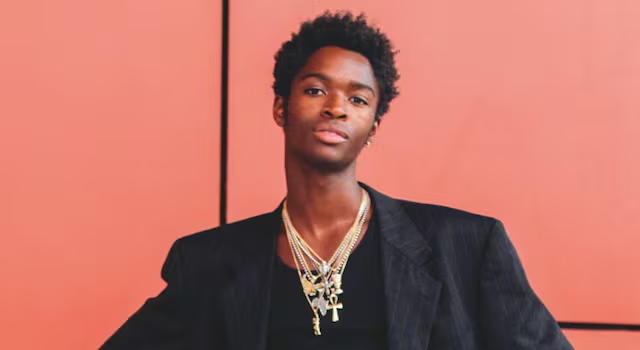Nollywood has never been shy of spectacle. Three decades on, the industry has dressed its characters so eloquently beyond the script — from sequined declarations of intention to head-ties that sit like crowns. Costume has never been decoration; it has been psychology, character, and cultural history interpreted through fabric. Some films have pushed this visual language so far that fashion moments are seared into memory as much as plot.
Here are five that changed people’s perception of Nollywood, and themselves.
- Glamour Girls (1994)
Long before Nollywood had red carpets, Glamour Girls put Lagos nightlife and decadence at its centre. Sequined gowns, bodycon dresses, and shoulder pads were visual shorthand for risk and ambition. Women in the film didn’t just walk into a room; they walked in as happenings, each outfit a statement of desire, status, and survival. It was one of the first times fashion was a plot device, with wardrobes as graphic as dialogue.
The 2022 remake may not have lived up to the storytelling power of the original, but it doubled down on the spectacle. Where the script faltered, the costumes spoke fluently. Styled in daring cuts, metallic sheens, and high-drama silhouettes, the women once again became walking symbols of ambition and excess. Even if the film struggled to capture the grit and daring of its predecessor, it succeeded in proving that fashion still carries the weight of narrative in Nollywood.




- The Wedding Party (2016)
No Nollywood film has ever styled weddings so over-the-top-looking. The aisle was turned into a runway, the bridal train choreographed a dance, and the wedding guests a sea of handmade lace and gele in every colour of the rainbow. Costume designer Yolanda Okereke took owambe fashion onto the big screen, making fashion trends overflow into Nigerian weddings. The Wedding Party proved that fashion could be both a cultural document and a blockbuster entertainment.



- King of Boys (2018)
Sola Sobowale’s Eniola Salami didn’t just dress; she equipped herself with apparel. Dark aso-oke, strong statement jewellery, and regal headwraps declared strength, determination, and a quiet readiness for battle. Each look was intentional, every crease deliberate. In King of Boys, fashion was woven into the psyche of a character, a visual representation of power and survival in a merciless climate.



- Anikulapo (2022)
Kunle Afolayan’s Yoruba epic turned costuming into a time trip. Every garment, from hand-loomed aso-oke to elaborate beads, was crafted to represent a specific historical period. Transcending glamorous contemporary sensibilities, the film opted for authenticity, with textures and prints providing as much storytelling muscle as dialogue. The result was a global showcase of Nigerian textile culture, proving cultural accuracy can be as stunningly beautiful as fantasy.



- Blood Sisters (2022)
Netflix’s Blood Sisters delivered as much fashion spectacle as it did suspense. From dramatic party gowns to impeccably tailored menswear, every outfit was calculated to match the show’s high-stakes drama. Costume designer Yolanda Okereke blended Lagos luxury fashion with pieces from Nigerian designers like Orange Culture, ATAFO, and Banke Kuku, creating looks that felt both aspirational and true to the city’s elite. Sarah’s flowing gowns softened her character’s vulnerability, while Kemi’s edgier, street-smart ensembles signalled grit and unpredictability. Even the wedding scenes doubled as fashion showcases, with aso-ebi guests dressed in coordinated fabrics and elaborate gele. In Blood Sisters, wardrobe wasn’t just style; it was a tool for building tension, revealing class divides, and framing the emotional core of each scene.




These five films did not just dress up their characters; they dressed up eras, attitudes, and entire vision systems by which to see Nigeria. In Nollywood, a character’s outfit can mean betrayal, announce ambition, or quietly pay tribute to custom. Occasionally, it’s the clothes, not the words, that linger longest in the mind. And as the industry grows bolder in its visual storytelling, one thing is sure: the next Nollywood fashion icon moment is already in some workshop somewhere, waiting to be given its close-up.
READ MORE: Five Fashionable Afrobeats Male Stars Who Own Every Look

























